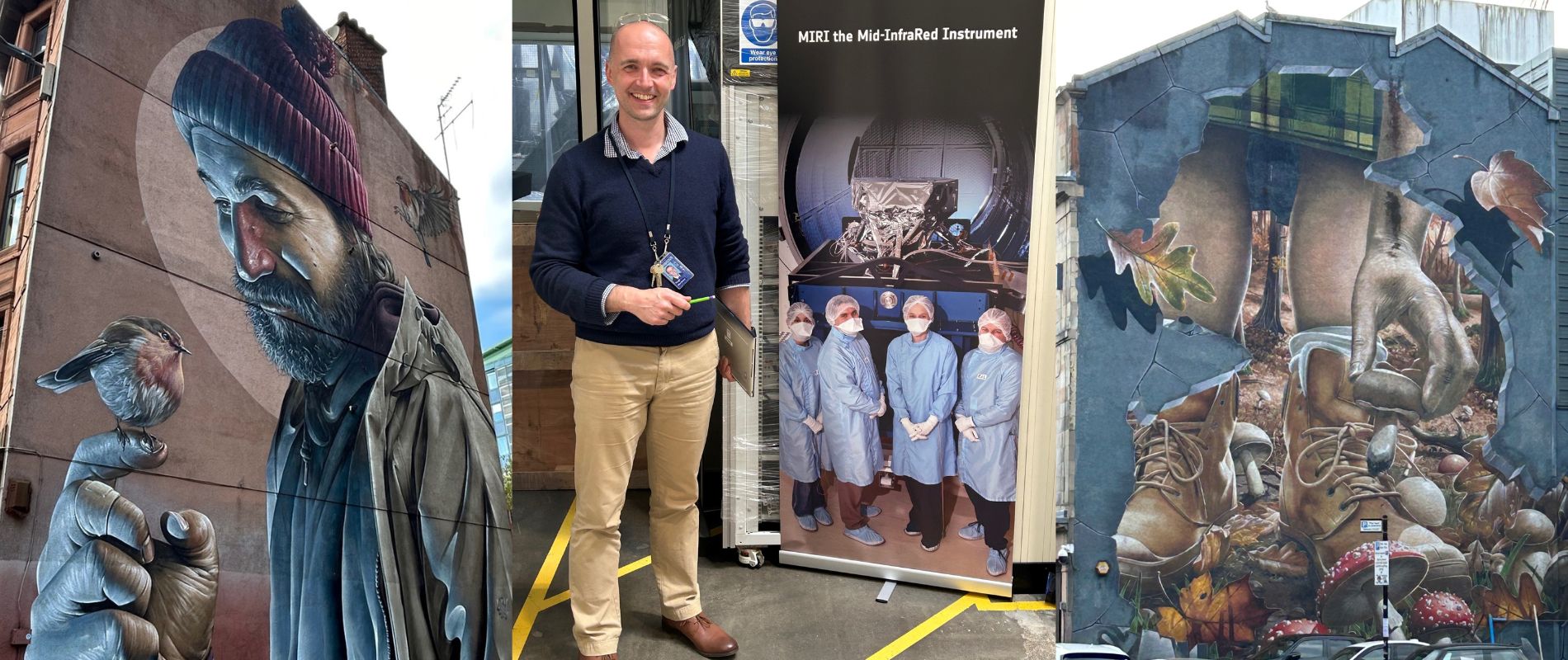During April, I had the pleasure of travelling to the UK to attend the annual New Phytologist editorial meeting, which this year was held in sunny Glasgow (every day was blue skies!). I have been an editor of New Phytologist since 2007 and am proud of the way the journal has grown in international stature to now be one of the top three global plant science journals. One reason why I have remained committed to the journal is the fact that it is owned by a non-profit foundation that has a mission to promote and serve the plant science community. In a world where publication of science outputs is increasingly occurring through large profit-focused businesses, it is an honour to edit for a journal that reinvests its profits into science.
While in the UK, I also travelled to the Oxford area to meet colleagues, some I have known for several years, and others that I have only recently got to know. First stop was in Wallingford, where I visited climate modeller, Dr Chris Huntingford at the UK Centre for Ecology and Hydrology (CEH). The CEH is funded by the UK Natural Environment Research Council (NERC) – a funding agency equivalent to the Australian Research Council (ARC) in Australia. In the UK, the NERC sits within its parent organisation, UK Research and Innovation (UKRI). The CEH has monitored and modelled environmental change for more than 60 years, with its staff “carrying out discovery science and supporting evidence-driven solutions to complex environmental challenges”. Chris is a mathematician who revels in helping other fields model head-line grabbing phenomena such as climate change and the spread of COVID-19. My own experience of working with Chris came through the need to better represent respiratory CO2 release by terrestrial vegetation in what are called ‘Earth System Models’ (ESMs), with our work highlighting the ways that future climate warming may increase global plant respiration. We used our catch up to explore future areas to collaborate – mostly through improving how the temperature response of photosynthesis is represented in ESMs. For me, it is fantastic to be able to work with scientists from different disciplines, for only through doing so will we be able to address some of the most important challenges facing society.
My next stop was to visit Dr Hugh Mortimer at the Rutherford Appleton Laboratory (RAL) at the Hartwell Campus in Oxfordshire. I had met Hugh recently when he and other delegates from the UK Global Research Innovation Partnership visited Australia to explore areas where researchers from the UK and Australia could work together in a value-add way, to make better use of satellites and other Earth observation technologies to improve productivity and climate resilience of agriculture. Hugh is an atmospheric physicist who has a passion for using his knowledge of technology and the Earth system to improve how we manage landscapes across the world. Taking me on a tour of RAL’s facilities, Hugh showed me how intensive, large-scale investment in infrastructure enables extraordinary breakthroughs to be achieved in fundamental research, whilst also being a magnet for industry engagement. An example of the latter are the extraordinary systems than enable large satellites to be tested under space-like vacuum conditions. They also stress-test satellites to be sure they can cope with the extraordinary vibrations that occur during lift-off from the Earth’s surface, and extreme high and low temperatures that can occur once in space.
Like the CEH, RAL is also part of UKRI. Thus, UKRI is an umbrella not just for research councils and centres, but also for national infrastructure. Hugh and I talked about the similarities and differences in science organisational structures – notably how in Australia the ARC is administratively separate from the National Collaborative Research Infrastructure Strategy (NCRIS), our umbrella organisation for national research infrastructure. The other difference was the level of centralisation of infrastructure, with UKRI facilities being concentrated in a few sites around the UK, whereas NCRIS facilities tend to be more dispersed among a larger number of locations/host organisations in Australia. My take away from the visit was how co-locating infrastructure and research capacity at scale can create an extraordinary environment where breakthroughs are more likely, and where industry can access facilities needed to innovate at scale.
Finally, an update on our Innovation Hub. The extension of our Hub space is now complete. If you are a business with an agri-food focus who would benefit from unique access to ANU researchers and infrastructure to support your R&D and growth, please get in touch with the CEAT team at [email protected].
Cheers,
Owen
